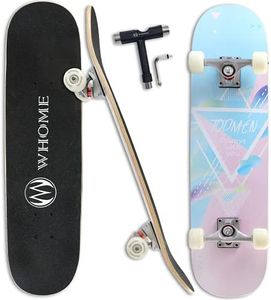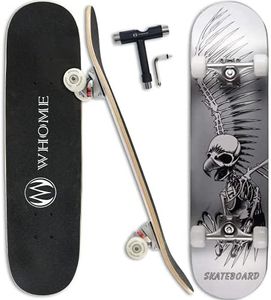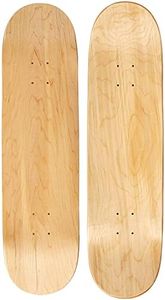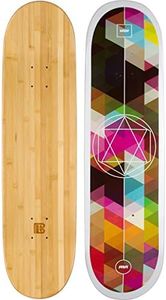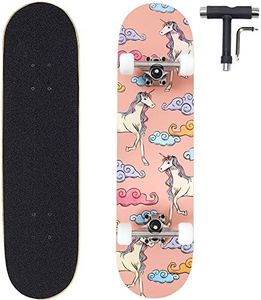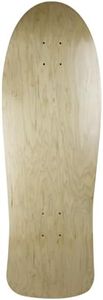We Use CookiesWe use cookies to enhance the security, performance,
functionality and for analytical and promotional activities. By continuing to browse this site you
are agreeing to our privacy policy
10 Best Skateboard Decks
From leading brands and best sellers available on the web.Buying Guide for the Best Skateboard Decks
Choosing the right skateboard deck is an important step in creating a skateboard that suits your size, style, and riding preferences. The deck is the main board you stand on, and its features such as width, length, concave, and material can make a big difference in how your skateboard feels and performs. By learning about these features, you can make better decisions that help you enjoy skating more and even improve your skills.WidthDeck width is the measurement from one edge of the deck to the other, usually in inches, and it’s a key factor in how stable or maneuverable your skateboard feels. Narrower decks (around 7.5 to 8 inches wide) are typically lighter and easier to flip and turn, making them a popular choice for street skating and technical tricks. Wider decks (over 8.25 inches) provide more stability, which is great for transition skating, ramps, and larger riders. If you’re a beginner or not sure, your shoe size can help guide you; those with larger feet may find wider decks more comfortable and secure, while smaller feet may prefer narrow decks for easier control.
LengthDeck length refers to the distance from the tip of the nose to the tail, measured in inches. Most standard skateboards have a length between 31 and 33 inches. While length doesn’t usually impact basic skating as much as width, shorter decks can feel more responsive for technical tricks, and longer decks can offer more space for your feet, adding comfort for cruising and transition skating. If you’re taller or have a longer stride, a longer deck may feel better for you; otherwise, average lengths are suitable for most riders.
WheelbaseThe wheelbase is the distance between the two sets of mounting holes where your trucks attach. A shorter wheelbase creates a tighter turning radius, which makes the board feel more playful and responsive. A longer wheelbase gives you more stability at high speeds and is often preferred for ramp skating and downhill. For beginners or those who want versatility, a medium wheelbase is usually the best starting point.
ConcaveConcave is the curve across the width of the deck. Deeper concaves give you more grip and control under your feet, helping with tricks and aggressive riding, while mellow concaves are more comfortable for cruising and casual skating. If you’re focused on flip tricks and technical moves, you may benefit from a deeper concave. For comfort or longer rides, a subtle (mellow) concave might suit you better.
Material/ConstructionMost skateboard decks are made of layers of maple wood because it’s strong and flexible, but you might also see bamboo, composite, or plastic materials. More layers typically make the deck stiffer and more durable, while fewer layers can make it lighter and more flexible. If durability is important and you skate hard, look for decks with more plies or reinforced construction. For a lighter feel, fewer plies or alternative materials may be appealing.
ShapeShape refers to the outline and contour of the skateboard deck. Traditional popsicle shapes are symmetrical with rounded edges and are common for all-around use and tricks. Shaped decks can have pointed noses, squared tails, or wider fronts and are often chosen for cruising, old-school tricks, or just a different feel. The best shape depends on what kind of riding you plan to do and what feels comfortable for your stance and style.
Nose and TailThe nose is the front, and the tail is the back end of your board. The size and angle of each can affect your tricks and balance. If you like popping ollies and doing tricks, a more pronounced nose and tail will help. If you mostly cruise, you may not need to worry as much about these features, but make sure you can still tell the front from the back of your board easily.


